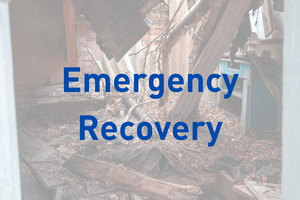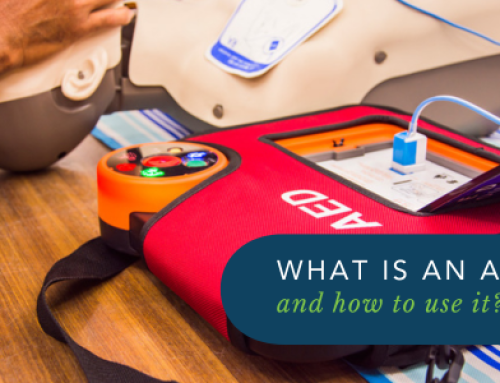What’s involved in the Emergency Recovery Phase?
When managers focus on emergency management, the main areas of emergency prevention, preparedness and response gain most of the attention and focus, as they are the key segments of the emergency framework. The aftermath, the emergency recovery process, is perhaps then considered as an afterthought if at all, most of the time well after the incident is over. Maybe because we are all relieved that the emergency incident has been resolved and we need to get back to work as quickly as possible.
The Emergency Recovery is a key step in the emergency management process and can be broken down into five key stages:
- Event Evaluation
- Debrief process
- Implement Changes
- Incident record and reporting
- Restock Emergency Equipment
An immediate review of the response process is essential to identify what went well for your staff so that these actions are embedded in the future process as being tried, tested and practical. Training can then be provided to all staff to ensure that the changes are implemented into the organisation’s response procedures.
After the incident has been declared safe and your workforce has returned to work a review of the incident, from start to finish, needs to be completed as soon as possible. That process can be formal or informal depending on the organisation and/or the emergency incident. Remember that an emergency is a situation that poses an immediate risk to life so everyone needs to be clear on the response actions to follow if there is a “next one”
The idea of the debrief is to improve the process for the next time.
Basically, the debrief process is to question the process to find any missing links in the response to the incident, not to find someone to blame. Assess the situation from a safety and prevention aspect first i.e., Was anyone hurt and were all the safety procedures followed. Obviously, you want to prevent the emergency from happening in the first place and need to determine what needs to be implemented to prevent a re-occurrence.
Ask questions to better understand the response process that was followed by the staff. Did staff respond immediately to the emergency alert device? (i.e., fire alarm, whistle etc.) Did the Chief Warden take immediate control of the situation? Was there a delay in understanding the threat? Were emergency services called immediately?
Everyone involved should be given the opportunity to provide feedback and any concerns from their perspective, ensuring that every opportunity is given to prevention and finding the gaps in the process that is the main objective of the debrief.
Who needs to be a part of the formal debrief? As a minimum all members of the Emergency Control Organisation (ECO) and Emergency Planning Committee (EPC) should participate.
The Emergency Control Organisation (ECO) is a team of people that have specialised training to respond to emergencies in facilities by implementing the organisation’s response procedures and to organise and supervise the safe movement of occupants and its visitors during an emergency incident
The Emergency Planning Committee (EPC) is generally responsible for developing, implementing, and managing your organisation’s emergency plan and the relevant staff training and response procedures. Depending on the size of your organisation that could be one person or several from different areas of business (management, HR, OH&S and/or facility maintenance)
Also recognise that most people suffer some increased levels of anxiety and trauma during an emergency incident. The symptoms of this trauma may include shock, denial and confusion, irritability, mood swings, feeling overwhelmed or a general feeling of loss of control among other things. Sometimes these symptoms can appear weeks or months after the incident. The debrief will allow the ECO team to discuss and review the likelihood of their teams needing professional assistance and a plan to treat the symptoms of trauma which is referred to as critical incident stress management.
Once the feedback is received from a wide group and collated, tasks can be assigned to correct any issues or change the work environment, that may have been identified as the “weakest link” during the response phase.
The last step would be to ensure that all equipment used in the response has been restocked and readied for use again should the need arise.
An incident log should be maintained for all emergency incidents with the EPC usually tasked with reporting the result of any investigations or recommendations back to the organisation. Records will assist to prevent future accidents or near misses, detail solutions for any risks identified in the debrief process and help manage costs caused by loss.
Contact our team today to develop a recovery plan for your workplace, or review your current emergency plan, to ensure you have safety at the top of your list should you have an emergency incident in your workplace.
GET IN TOUCH
Are you ready for peace of mind that your workforce is as safe and prepared as possible?
With a dedicated team of staff ready to help you meet compliance requirements and improve the overall safety of your workplace, all you need to do is get in touch.
Request your free audit today!



